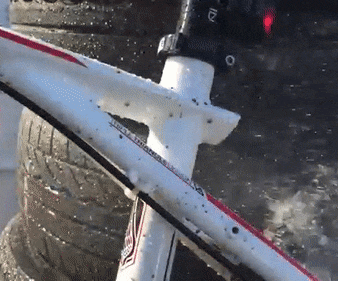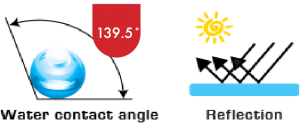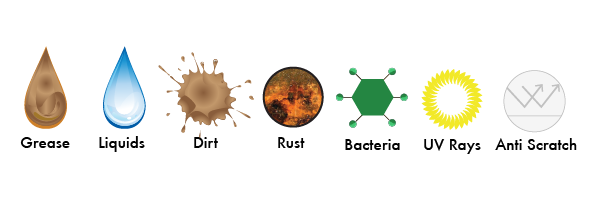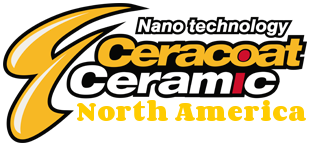Extremely Advanced Invisible Coating Is Both Easy to Use And Has A Long Life Durability
Ceracoat™ labratories have tests prove the durably and effectiveness of this highly advanced coating, withstanding many hours of salt and acid water spray. Ceracoat™ Bicycle Care® has and is demonstrated at local and national exhibitions to withstands brake and clutch fluid tests along with a host of others. Ideally suited as a water/dirt-repellent surface modifier for non-absorbent surfaces
- Generates an invisible (transparent) surface barrier.
- Surface will maintain the original appearance, but with enhanced brilliance.
- No cutting compounds. Will not remove or damage top layer of paint.
- Contains an advanced bonding solvent. Ceracoat™ Bicycle Care® bonds to the surface at molecular level.
- Considerably reduces drag and so offers greater efficiency for vehicles.
- High Scratch resistance. Sapphire glass hard coating.-Excellent fuel staining proofing characteristic.
- Resistant to frost, friction, UV, alkali, organic acids, sea water, salty air, bird fouling and heavy staining.
- Prevents tar, sap and insect residues from sticking to the surface.
- Reduces the growth of micro-organisms and bacteria by creating a biostatic surface.
- Water and dirt repellent (hydrophobic).
- Treated surfaces remain clean for prolonged periods and are “easy to clean”.
- Self-cleaning effect on vertical surfaces with heavy rain.-Painted surfaces become refreshed.
- Easy to self apply.
- Helps to prevent water marks, dirt, algae and bird fouling from adhering to surface.
- No scraping, scrubbing or harsh chemical cleaners needed as soiling agents do not bond to the coated surface.
- Pressure washer safe. Will not remove the coating.-Ideal for winter protection against corrosion and salt staining.
- Ideal for visor/windscreen clarity in wet weather Hydrophobic.
- Exceptionally long durability (1 year in most conditions).
- Non-stick surface.
- Protects painted surfaces from irreparable abrasion and “salt burn in”.
- Highly resistant to a large number of organic solvents.
- The very best of the best when it comes to self Application NANO Coating, some so called professional products don’t even come close to Ceracoat™ Bicycle Care®.



Ceracoat™ Bicycle Care®
Paint Protection

Ceracoat™ Bicycle Care® protects the entire bicycle (metal, light alloy, chrome, plastic, kevlar, carbon, glass: body, wheels, window, tank, lamp, mirror, helmet, visor) against all kind of influences (liquids + dirt). Ceracoat™ thin nanocoating will coat and protect the entire bicycle from all "stones" projected on the bicycle and makes the surfaces very shiny for a long time. It cleans + coats + protects + makes the surfaces shiny + smooth. After treatment with Ceracoat you no longer need any cleaners.

Ceramic swiss nanotechnology can be easily installed on new and existing surfaces in homes,businesses, vehicles and many other environments. Ceracoat™ Products nanochemistry can be applied to most surfaces containing silica (silicon dioxide) such as glass, ceramic tile, porcelain, granite and quartz. The covalent bond forms an ultra-thin protective layer of optically clear material which makes the surface significantly easier to clean and resistant to weathering. The method is done at nano-scale levels, which is a length scale ranging from approximately 1 to 100 nanometers (1 nanometer is 1 billionth of a meter). The bond created in the process is a covalent bond. A covalent bond means that the coating actually shares electrons with molecules in the glass/paint/wood/plastic/chrome/metal ect.. itself, thus becoming part of the surface. Covalent bonds are approximately 10 times stronger than hydrogen-bridge bonds, which are commonly used in most other water repellent coatings.
